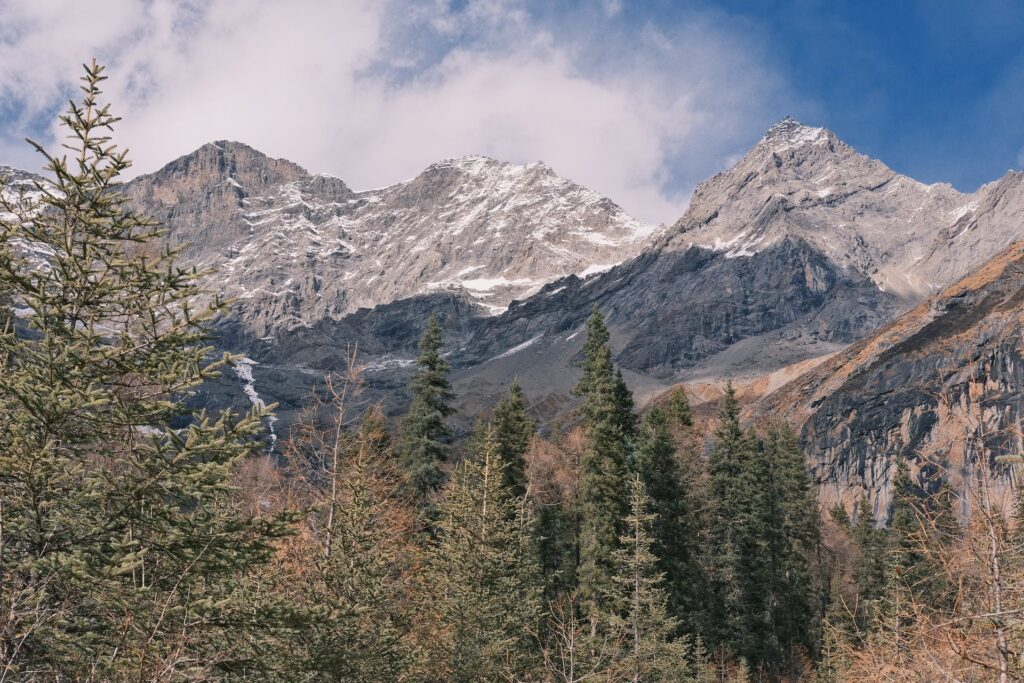The captivating spectacle of Norwegian flora and fauna

Norway, the Scandinavian country known for its majestic fjords, Northern Lights and Viking heritage, is also a land of rich and preserved biodiversity. Norwegian flora and fauna is a fascinating spectacle, a natural ballet that unfolds through the seasons. From dense forests to rugged mountains, every corner of this country is home to amazing wildlife and lush vegetation.
A Diverse Fauna: From the Little Lemming to the Imposing Elk
Norway is home to a varied and unique fauna. For example, the lemming, a small rodent typical of the Arctic regions, is one of the country’s most emblematic animals. Despite its tiny size, it is known for its aggressive behavior when it feels threatened.
In contrast to the lemming, the elk, Norway’s largest land mammal, impresses with its stature and presence. Majestic and solitary, it is often spotted in Norwegian forests, but also sometimes near inhabited areas.
Norway, a paradise for migratory birds
Every year, Norway becomes a stopover for many species of migratory birds. Among them is the Arctic loon, which makes one of the longest migratory flights, with a journey of more than 4,000 kilometers to reach this Nordic country.
It would also be impossible not to mention the Atlantic puffin, that colorful seabird nicknamed the “sea parrot”. With its multicolored bill and black-and-white plumage, it is one of the most popular species among ornithologists.
A Kaleidoscope of Flora
- Birch: This is the most common tree in Norway. Its cold hardiness and ability to grow on poor soils make it one of the pillars of Norwegian forests.
- Crowberry: This arctic plant produces edible berries. It is often used in the preparation of local jams and liqueurs.
- Opposite-leaved Saxifrage: This small alpine flower grows in the crevices of the rocks of the Norwegian mountains. Its delicate beauty contrasts with the extreme conditions in which it lives.
Norwegian flora and fauna are a true celebration of life in all its diversity. Each species plays a key role in the ecosystem, and together they create a living tableau that amazes and inspires.
Norway’s Marine Mammals: A Show in Itself
Norway is also prized for its marine mammals. Its cold waters are home to a variety of species, including whales, dolphins and seals. Watching these majestic creatures on a cruise through the Norwegian fjords is an unforgettable experience.
The fin whale, the second largest whale species in the world, is frequently spotted along the Norwegian coast. Similarly, orcas, with their distinctive black and white markings, are a sight to behold, especially when hunting in groups.
Alpine Flora: Discreet beauty of the heights
Norway is a mountainous country, and its alpine flora is as impressive as its fauna. Plants such as the eight-petalled Dryad and the Alpine Anemone bloom in these inhospitable regions, adding a splash of color to the eternal snow.
These plants have developed incredible adaptations to survive in harsh conditions, such as low temperatures and nutrient-poor soil. Their resilience is a testament to the strength and beauty of nature.
Norway’s Nature Reserves: Biodiversity Sanctuaries
- Jotunheimen National Park: This park is home to several of Norway’s highest mountains and a wealth of wildlife, including elk, foxes and golden eagles.
- Røst Nature Reserve: This is one of the most important nesting sites for seabirds in Norway, especially for the Atlantic puffin.
- Hardangervidda National Park: This is the largest high mountain area in Northern Europe and an important habitat for mountain reindeer.
Norway has made great efforts to preserve its biodiversity by creating these nature reserves. They are essential for protecting habitats and ensuring the survival of many species.
The Northern Lights: Norway’s Celestial Ballet
Norway is also known for a spectacular natural phenomenon: the Northern Lights. These dancing lights in the night sky are caused by solar particles colliding with the Earth’s atmosphere.
The spectacle of the Northern Lights, with their waves of green, pink and purple light, is truly breathtaking. It’s no surprise that this phenomenon attracts visitors from all over the world to northern Norway during the winter months.
Norwegian cuisine: A matter of land and sea
Norwegian cuisine is heavily influenced by its natural environment. Seafood, in particular, is a mainstay of local cuisine, with specialties such as smoked salmon, torsk (cod), and rakfisk (fermented fish).
Wild berries, such as blueberries and lingonberries, are also very popular in Norway. They are often used in desserts or as a garnish for game.
Finally, brunost (or “brown cheese”) is a unique Norwegian cheese. It is made from cow or goat whey and has a mild, caramelized flavor.
Conclusion
In short, the flora and fauna of Norway are jewels that enrich this country. They remind us of the importance of respecting and preserving our environment for future generations. In Norway, each sunrise reveals a new day of observation and wonder at the spectacle of nature.
Copyright 2023 holidaysnorway.uk

